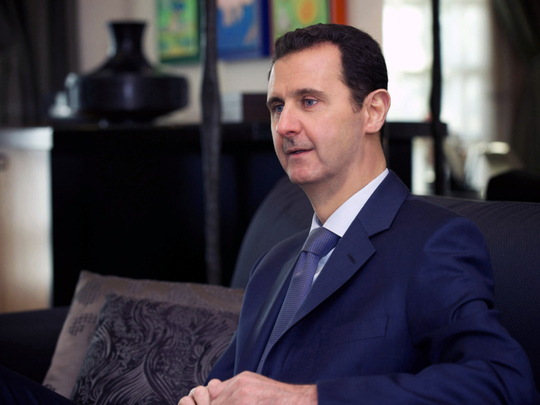
In 2011, the US ambassador to Syria, a mild-mannered diplomat named Robert S. Ford, became the face of American support for the Arab Spring when he boldly visited opponents to the brutal regime of Bashar Al Assad in the northern city of Hama. In 2014, Ford quit, saying he could not defend the Obama administration’s inconstant support for Syrian rebels. “More hesitation ... (will) simply hasten the day when American forces have to intervene against Al Qaida in Syria,” he had warned.
Now, a year later, Ford’s warning has come true. US warplanes bomb extremists in Syria week after week. Northern Syria has become a base for both Daesh (Islamic State of Iraq and the Levant), which invaded Iraq last year, and an Al Qaida franchise that trains European terrorists. But Ford thinks US policy has moved backward, not forward. “We’re seeing Syria divide into four countries,” he told me last week, “and I’m not sure it can be put back together.”
It’s the most conspicuous failure of US foreign policy today. The Al Assad regime that President Barack Obama declared dead remains in power and roughly half its territory is held by extremists. The moderates the US said it would support are mostly scattered and defeated.
You would not have learned that from Obama’s State of the Union address last week, though. In Obama’s telling, Syria is part of a success story. “In Iraq and Syria, American leadership, including our military power, is stopping (Daesh’s) advance,” Obama said. “Instead of getting dragged into another ground war in the Middle East, we are leading a broad coalition ... (and) supporting a moderate opposition in Syria that can help us in this effort.”
It’s “a smarter kind of American leadership,” the president said.
Actually, two American impulses have collided in Syria. One was the desire to help topple a regime that has held power through “murder, hostage-taking, enforced disappearances, torture, rape, sexual violence, use of child soldiers, targeting civilians, and indiscriminate bombing,” to quote the State Department. The other, stronger impulse was to avoid getting entangled in another war — and that, officials said, has been the most consistent message from Obama and his closest aides.
So even as the administration announced programme after programme to aid moderate rebels — from humanitarian aid and “non-lethal supplies” to a not-yet-started plan to train 5,400 rebels a year — the warning that filtered through the bureaucracy was: It is safer to move slowly than it is to take risks. “There’s never been a great sense of urgency in the administration about doing something big,” Ford said. The new training programme, he added, is so small that it “has the feel of checking a box.”
Meanwhile, the extremists did not wait. They collected government aid and private donations from the Arab Gulf states; they bought weapons and trained rebels; and, in November, they overran bases of Harakat Hazm, an armed group the US was backing, and seized its US-supplied anti-tank missiles. “At that point, our window (for arming rebels) closed,” Ford said.
There is not much appetite in Congress for shipping anti-tank missiles to rebels if the missiles end up in the hands of Al Qaida affiliates. But that still leaves the US fighting a war in Syria if it is to “destroy” Daesh, as Obama has promised. That goal, if it is real, will require a ground force. US officials have nominated Turkey, or a coalition of Turkey and friendly Arab forces, plus the future Syrian rebels if their US training ever starts. But that is a force that does not exist in service of a strategy that has not been described.
One thing US officials still insist they will not do is conclude an alliance with Syria’s Al Assad. But they are no longer insisting he needs to step down immediately. They have suggested that the US could be flexible if Al Assad’s regime entered serious peace talks with the non-extremist opposition.
“It is time for President [Al] Assad (and) the Al Assad regime to put their people first and to think about the consequences of their actions, which are attracting more and more terrorists to Syria,” US Secretary of State John Kerry said on January 14. If the administration has a diplomatic strategy, it centres on cajoling countries that have influence in Syria — Russia, Iran, Saudi Arabia and Turkey — to join in a combined effort to end the conflict. The premise is that those countries fear Daesh and other terrorist groups enough to put aside their otherwise deep divisions. But that is a long way from happening too.
Until then, the US strategy boils down to attacking Daesh from the air, hoping a war of attrition somehow weakens Al Assad’s grip on power and asking Turkey (and perhaps others) to act on the ground where the US has been unwilling.
“Our problem is that we don’t have much leverage,” Ford noted. “We have put very little skin in the game. The Russians and Iranians have put a lot of skin in the game.”
And that offers little ground for optimism. The lesson of American misadventure in Syria may be this: A risk-averse foreign policy can keep you out of ground wars, but it can also keep other goals out of reach too.
— Los Angeles Times









